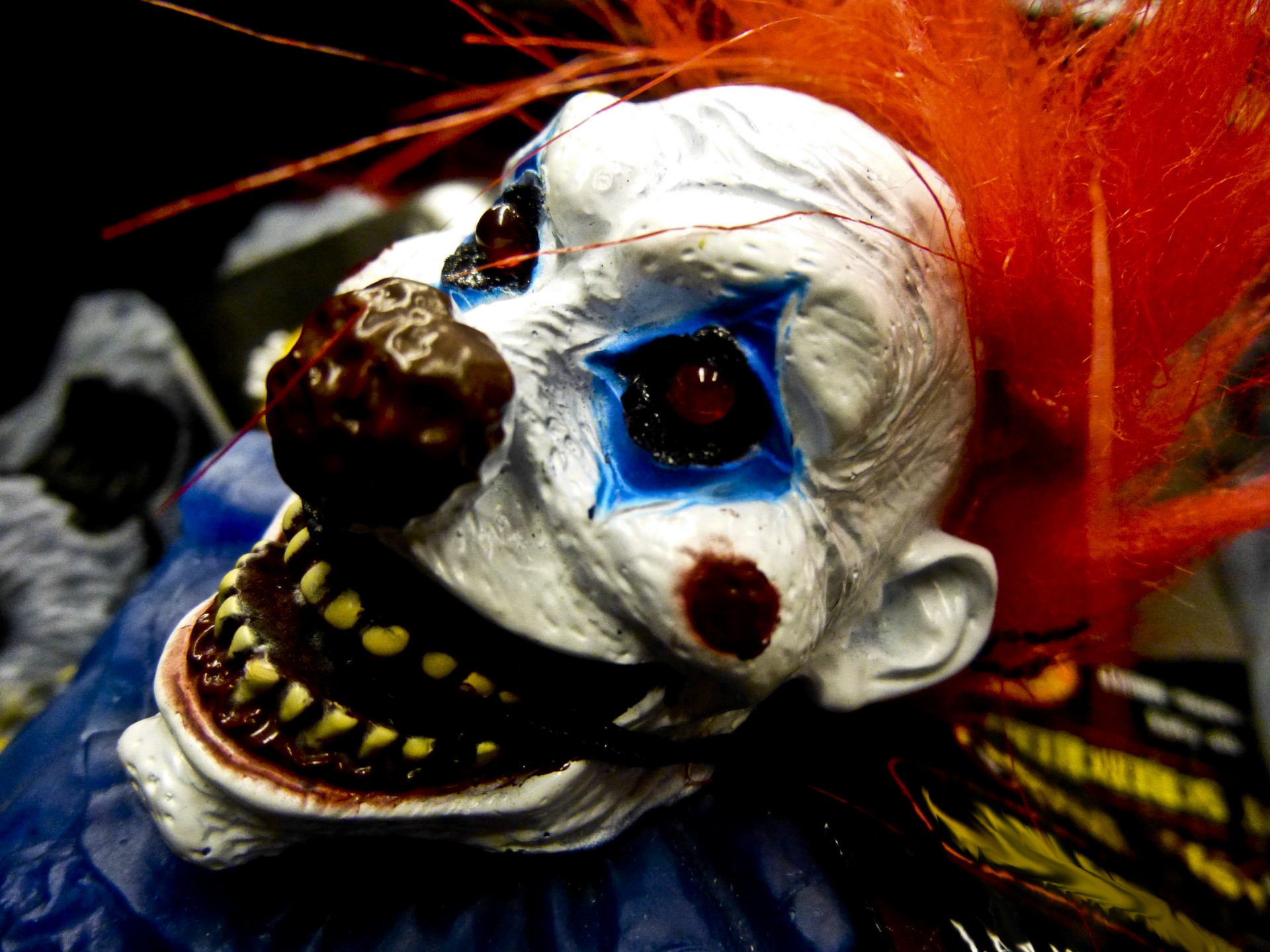We all have those crazy irrational fears. Some people are scared of enclosed spaces, others are left petrified at the concept of public speaking, there’s even a fear of long words – ironically referred to as hippopotomonstrosesquipedaliophobia. Yet one of the most well-known phobias is that of clowns.
Logically, coulrophobia (the fear of clowns) makes little sense. There is arguably nothing more innocent than an entertainer of children whose job it is to dress up in brightly coloured clothes and perform exaggerated slapstick routines incorporating balloon animals, squirting water flowers, and juggling batons.
Nevertheless, there has always been a certain ambiguity surrounding the clowning profession. The emotions and intentions of the performers always remain a mystery, masked behind the unrelenting smiles. A clown may well be all smiles on the surface, but who really knows what is going on underneath? Fundamentally, it is this- the not knowing – that has generated an aura of creepiness around clowning. Furthermore, the stereotypical image of the scary clown is no stranger to the horror genre with properties such as Killer Klowns from Outer Space and Batman reinforcing the idea that clowns are hiding something more sinister than just their identity underneath their makeup. Being scared of clowns may be illogical, but there is nothing illogical about feeling uneasy when presented with the unknown.
However, in some cases this uneasy feeling has been recently replaced with full-blown horror. Originating in the US, a craze involving individuals dressed as creepy killer clowns has steadily been gaining steam over the last few months. The first sightings came following an incident from a small town in South Carolina back in August. According to a witness, an ominous figure could be seen wearing “a scary clown mask, red curly wig, yellow dotted shirt, and blue pants and shoes” as he attempted to lure children into the woods.
The emotions and intentions of the performers always remain a mystery, masked behind the unrelenting smiles
Thanks to the viral nature of trends spreading through the internet, copycat clown sightings shortly followed in neighbouring states and quickly escalated to terrifying heights. Clowns outside-and-in, clowns following children to school, even threats made through social media with one individual going so far as to tweet “We will be at all High Schools this Friday to either kidnap students or kill teachers going to they cars…”.
In the US alone, creepy clowns have been sighted in over 20 states, with 30 arrests having been made, and 4 schools put on lockdown over fears for the safety of students and staff. Fears that sadly have been realised following an alleged dispute over a clown mask which resulted in the tragic stabbing to death of an American teenager.
It would also appear that – in spite of originating in the United States – that craze is by no means a wholly American venture. Creepy Clowns have started popping all over the place from Canada to Australia, with some recent sightings having taken place in the UK. One of the first of these sightings – which took place on 30th September – involved the arrest of a Newcastle teenager who had been carrying a blade and terrorising children. An axe wielding clown was also sighted in Loughborough by a witness who stated “I have never been so terrified in my life.” Closer to home, it seems that the craze has even come to Exeter with sightings having been reported around the city.
In light of these sightings the Metropolitan Police have issued a statement urging individuals to “remember to act in a responsible manner and understand that they could be prosecuted if a criminal offence is committed”. Undeniably there are mounting concerns with regards to public safety. However it could be argued that the real victims of the situation are those professionally involved with clowning itself.

Some retailers in the US have begun pulling ‘scary’ clown masks from the shelves. (Image: publicdomainpictures.com)
Contrary to the belief that there is no such thing as bad press, actual clowns have not exactly benefited from all the attention inherent with a viral trend of this nature. All due to a near rampant state of hysteria, Clowns have been rejecting invitations to perform at public events, had lined up work cancelled, and are even avoiding going out in public over fears of backlash. To an extent it is understandable why many have faced arrest for going out dressed as clowns. As one student stated ““It is very difficult to differentiate between an innocent or hostile clown, since either type has a creepy vibe anyway”. But, it should go without saying that people should not face arrest and discrimination based on the attire associated with their career choices.
A big question mark surrounds the whole occurrence. What started the initial craze of people dressing up as creepy clowns? Why, nearly 2 months after the first incident, is it still going on? Is there even a deeper meaning? Some have theorized that the craze is some sort of viral marketing campaign ahead of next year’s film adaptation of Stephen King’s It. Others suggest that the clowns do in fact have malicious intent. But then there is always the possibility that the entire debacle is merely a prank in poor taste gone viral.
The scary thing is, nobody knows for sure. As a witness from the US puts it “We don’t know if it’s a prank, of if they’re really trying to harm people”. Ultimately, just as there has always been a certain ambiguity to actual clowns, the creepy clown craze shall remain shrouded in mystery for a while yet.


